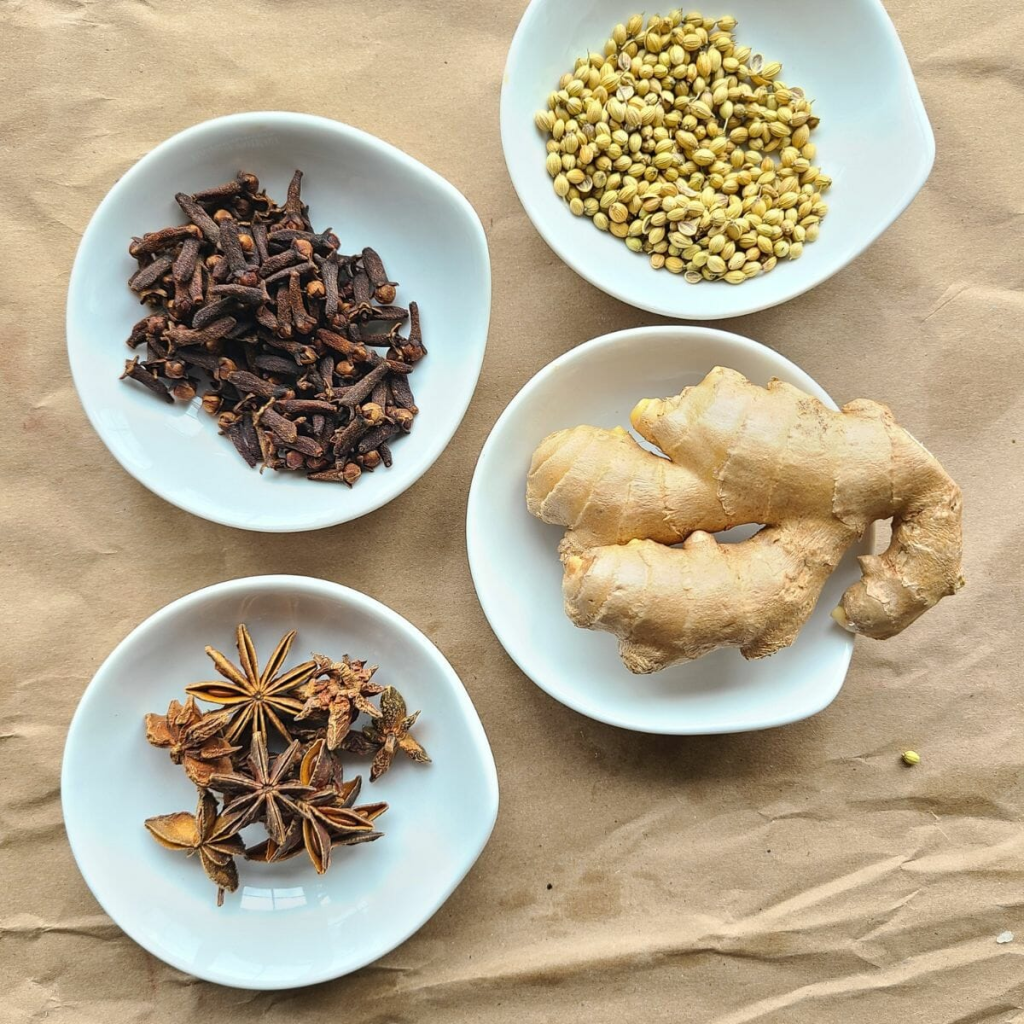Pho, the quintessential Vietnamese noodle soup, is renowned worldwide for its rich, aromatic broth and flavorful ingredients. The heart of Pho lies in its broth, which is infused with a medley of spices that give it its unique and unforgettable taste. In this article, we’ll explore the essential spices that are indispensable for making authentic Pho.

The Foundation of Pho: A Symphony of Flavors
Creating the perfect pho broth is both an art and a science. It requires a delicate balance of spices to achieve the harmonious blend of sweet, savory, and aromatic flavors that define this iconic dish.
A pho bowl is filled with rice noodles, chicken or beef strips, and many fresh and dried herbs and spices. The bone broth with plenty of spices is simmered for 4-5 hours, and in the end, meat strips, noodles, and herbs are added just before serving.
Spices are a significant part of Pho. It gives it a fragrance broth and its distinct taste and depth. If you are making pho at home from scratch, you might want to know about these spices and how they can change the broth’s flavor.
Essential Spices for Pho
Spices give a flavor, taste, and aroma to the broth. Primarily we use dried spiced to water with bones. It provides warmth to the broth. Fresh spices are also used, but they are added towards the end. Two things you need to take care of are pho meat and spices.
An important thing to remember about these dried spices is that despite their excellent flavor and fragrance. Adding spices like star anise, cinnamon stick, or dried cardamon can taste bitter. So a balance of spices is essential for flavor.
Here we have discussed some spices used in pho for primary flavors.
1. Star Anise
- Flavor Profile: Star anise adds a sweet, licorice-like flavor with a hint of warmth, essential for creating the signature taste of pho.
- Role in Pho: It provides depth and complexity to the broth, balancing the savory elements with its subtle sweetness.

2. Cinnamon
- Flavor Profile: Cinnamon sticks impart a sweet and slightly spicy flavor, adding warmth and richness to the broth.
- Role in Pho: The spice enhances the overall aroma and helps to create a well-rounded flavor profile.

3. Cloves
- Flavor Profile: Cloves offer a strong, pungent flavor with a hint of sweetness and bitterness.
- Role in Pho: They add a layer of complexity and enhance the savory notes in the broth, making it more robust and flavorful.

4. Coriander Seeds
- Flavor Profile: Coriander seeds provide a citrusy and slightly nutty flavor.
- Role in Pho: They contribute a fresh, aromatic note that brightens the broth and complements the other spices.

5. Cardamom Pods
- Flavor Profile: Cardamom has a sweet, floral flavor with a hint of mint and spice.
- Role in Pho: It adds a unique, aromatic quality to the broth, enhancing its complexity and depth.

6. Black Peppercorns
- Flavor Profile: Black peppercorns offer a sharp, pungent flavor with a hint of earthiness.
- Role in Pho: They provide a subtle heat and a robust base flavor that balances the sweetness of the other spices.

Supporting Ingredients
1. Ginger
- Flavor Profile: Ginger adds a fresh, zesty, and slightly spicy flavor.
- Role in Pho: It enhances the overall aroma and flavor of the broth, providing a warming quality that complements the spices.
2. Onion
- Flavor Profile: Onions contribute a sweet and savory flavor when caramelized.
- Role in Pho: They add depth and sweetness to the broth, balancing the stronger flavors of the spices.
3. Fish Sauce
- Flavor Profile: Fish sauce adds a salty, umami-rich flavor.
- Role in Pho: It enhances the savory depth of the broth and ties together all the flavors.
Some Tips on Using the Spices
When it comes to the dried spices, make sure you don’t grab a mix of all.
Buying a pack of mixed spices seems like an easy solution, and you can add a tablespoon to the broth, but it is not the right way. Try to have the right measurement for each spice and add accordingly. As we said, even one additional black cardamon can disturb the balance of broth, and it may taste bitter.
See recipe below for the best ratios!

Use whole Spices
Powdered spices may not have the same flavor as the whole one. Secondly, powdered spices can alter the color of broth, and it will look dark. You can add whole spices in a cotton cloth or any spice packet used for this purpose and discard them afterward. They are only for flavor and aroma; once the broth is ready, you can strain it and have a clear golden broth.
Roast the Spices
Some spices like clove, cardamon, and coriander seeds taste way better if you heat them immediately before adding to the broth. These dried spices have oils, and a little heat activates them and releases fragrance. The small step can give a whole new to the broth. You can roast in the oven for a few minutes as well. If you do it on the stovetop, be mindful that we’re not using oils! Just dry roast them for a few minutes until fragrant.
Check Shelf Life
Dry spices are not used in large quantities. Even if you don’t buy bulk spices, they stay there for a long time. These dried spices do not go rancid easily and have an optimal shelf life of one to two years. But still, make sure you check the shelf life of roasted pho spice packets before adding them to water.
Use a Tea Filter
Add all basic spices to the tea infuser and put it into the broth. You can use a small cotton cloth as well. Simply tie everything in it and discard it later. Spice bags are also available with varied spices packed in a bag that you can add to boiling broth and later discard.
Pho is a culinary masterpiece that relies on a carefully curated blend of spices to achieve its distinctive flavor. Each spice plays a crucial role in creating the harmonious and aromatic broth that is the hallmark of this beloved Vietnamese dish. By understanding and appreciating these essential spices, you can craft a truly authentic pho that captures the essence of Vietnam’s rich culinary heritage.


